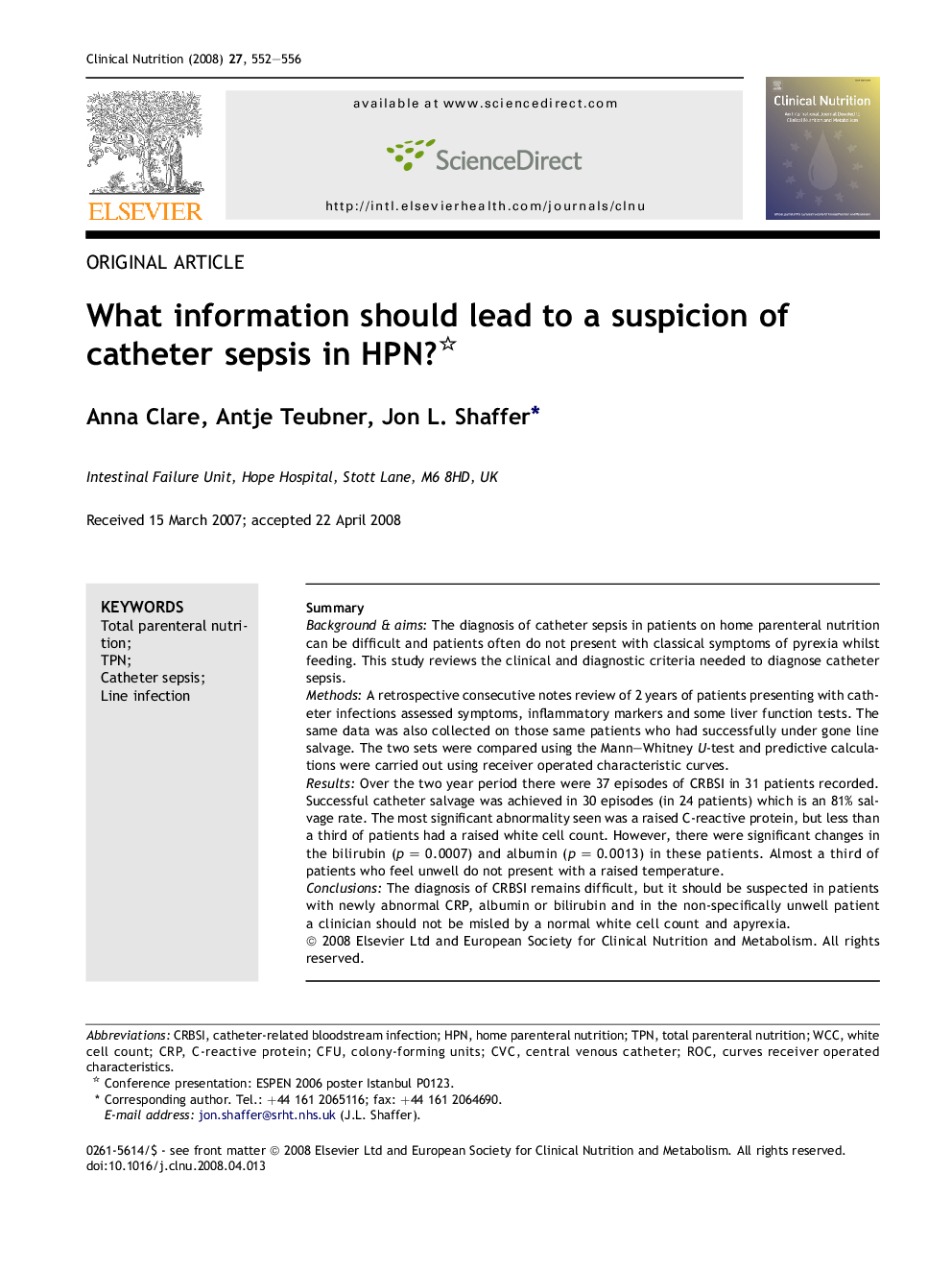| Article ID | Journal | Published Year | Pages | File Type |
|---|---|---|---|---|
| 2687594 | Clinical Nutrition | 2008 | 5 Pages |
SummaryBackground & aimsThe diagnosis of catheter sepsis in patients on home parenteral nutrition can be difficult and patients often do not present with classical symptoms of pyrexia whilst feeding. This study reviews the clinical and diagnostic criteria needed to diagnose catheter sepsis.MethodsA retrospective consecutive notes review of 2 years of patients presenting with catheter infections assessed symptoms, inflammatory markers and some liver function tests. The same data was also collected on those same patients who had successfully under gone line salvage. The two sets were compared using the Mann–Whitney U-test and predictive calculations were carried out using receiver operated characteristic curves.ResultsOver the two year period there were 37 episodes of CRBSI in 31 patients recorded. Successful catheter salvage was achieved in 30 episodes (in 24 patients) which is an 81% salvage rate. The most significant abnormality seen was a raised C-reactive protein, but less than a third of patients had a raised white cell count. However, there were significant changes in the bilirubin (p = 0.0007) and albumin (p = 0.0013) in these patients. Almost a third of patients who feel unwell do not present with a raised temperature.ConclusionsThe diagnosis of CRBSI remains difficult, but it should be suspected in patients with newly abnormal CRP, albumin or bilirubin and in the non-specifically unwell patient a clinician should not be misled by a normal white cell count and apyrexia.
